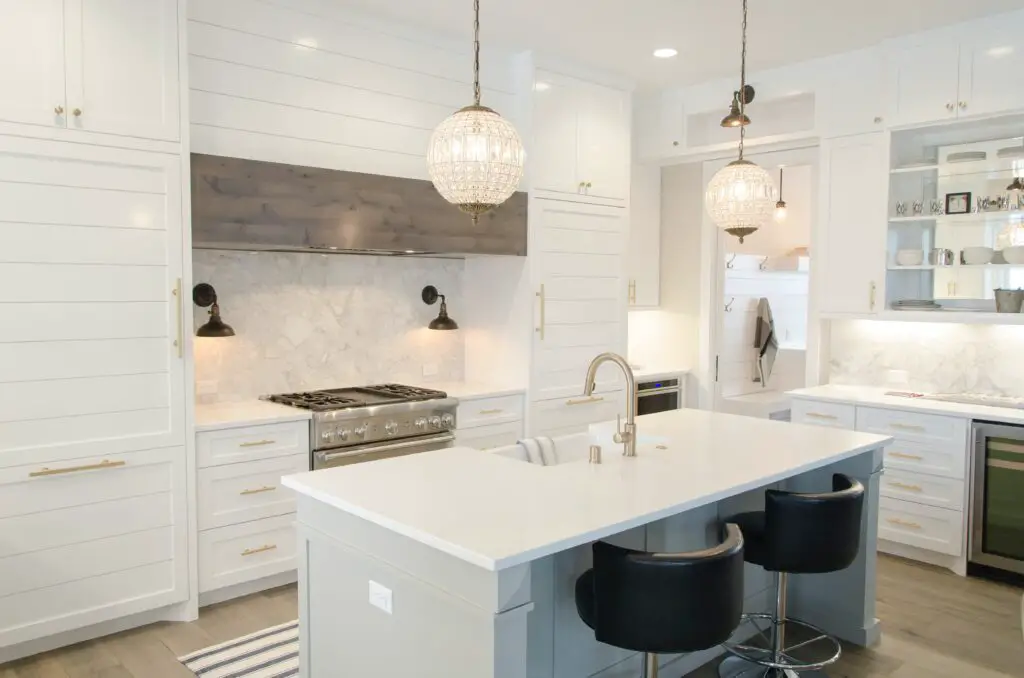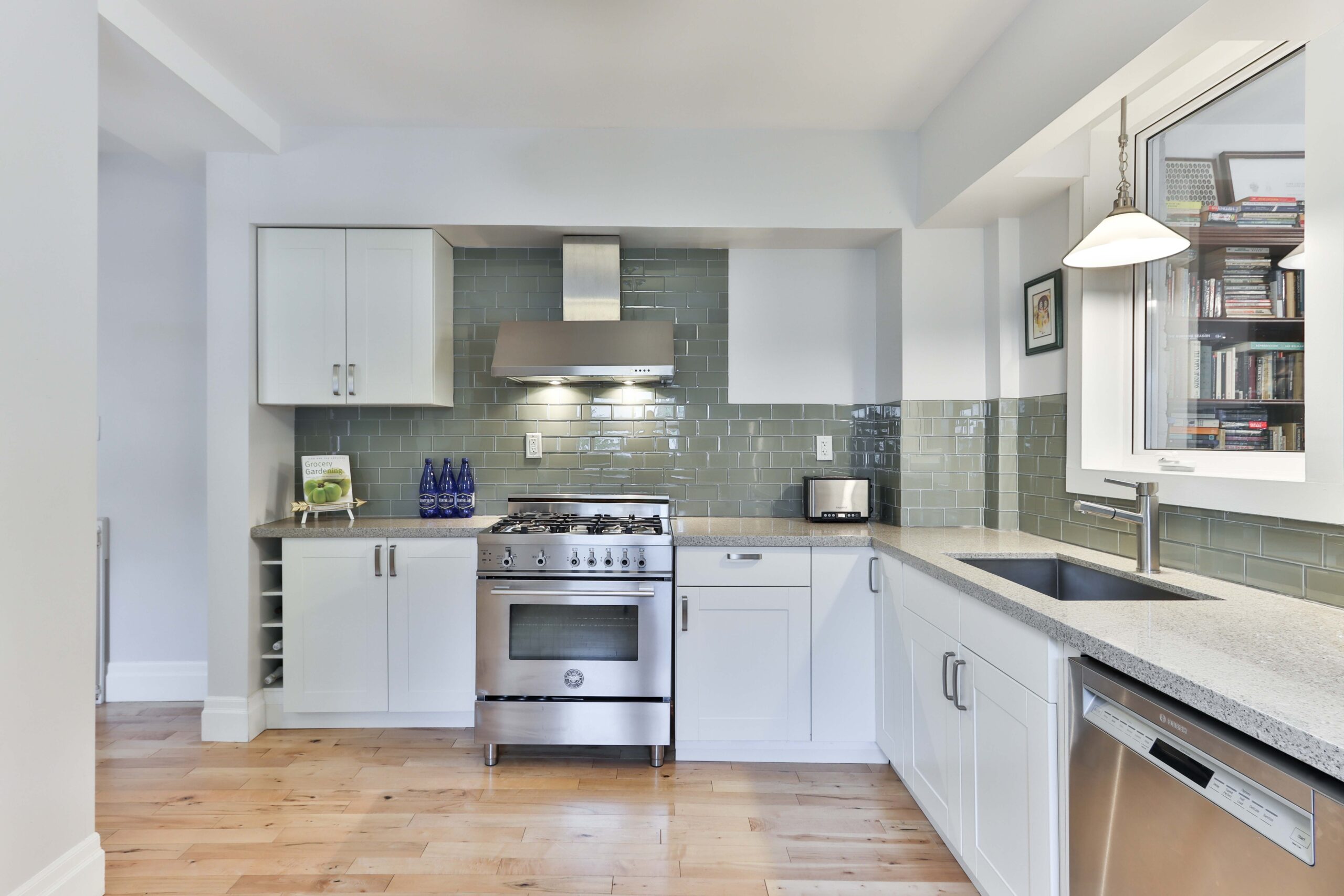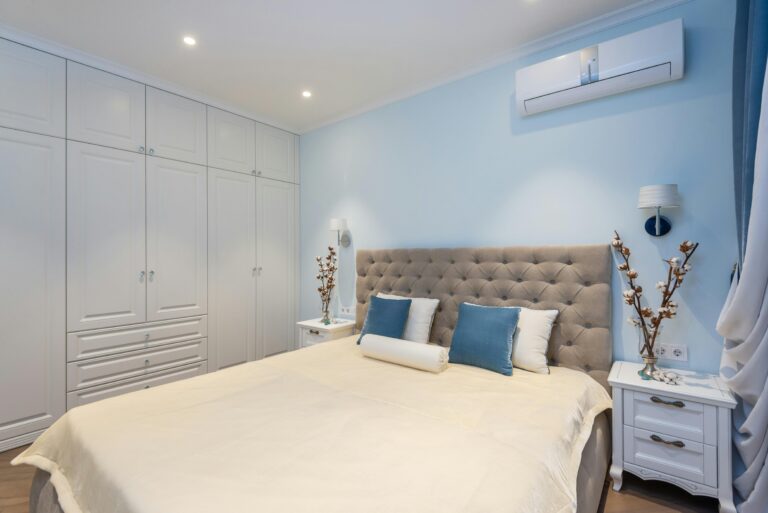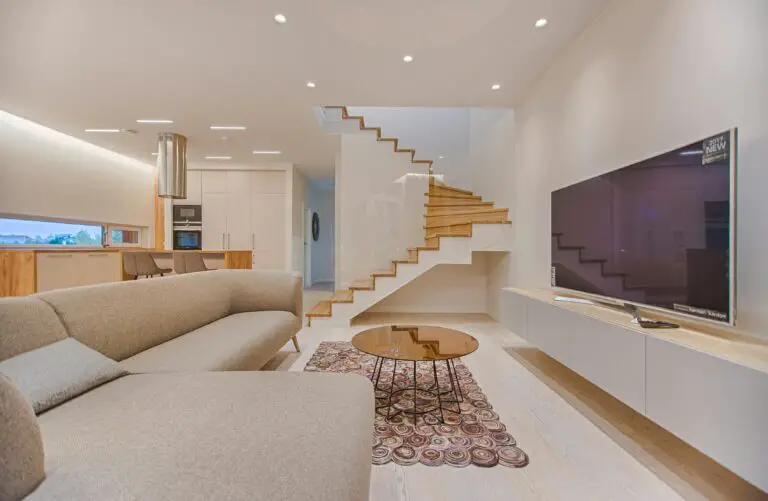The minimalist kitchen design trend has taken center stage. With its clean lines, clutter-free spaces, and emphasis on functionality, a minimalist kitchen not only looks stunning but also simplifies your daily life. If you’re contemplating revamping your kitchen or adopting a minimalist approach, you’ve come to the right place.
In this comprehensive guide, we will explore the key principles, detailed styling tips, and even answer some frequently asked questions to help you create the perfect minimalist kitchen.
I. Key Principles of Minimalist Kitchen Design
A. Decluttering and Simplifying
In a minimalist kitchen, less is more. Start by decluttering your space. Remove items you don’t use regularly. Store only what you need for daily cooking and meal prep. Invest in smart storage solutions to keep countertops clean and tidy.
B. Functional Layout
A well-planned layout is crucial for a minimalist kitchen. Opt for a layout that promotes efficiency. The classic work triangle (sink, stove, refrigerator) is a popular choice. Keep the pathways clear to avoid obstacles and create a sense of openness.
C. Neutral Color Palette
Minimalist kitchens often feature a neutral color palette. Whites, grays, blacks, and earthy tones create a serene atmosphere. These colors make your kitchen feel spacious and timeless.
D. Quality over Quantity
Choose high-quality materials and appliances over a surplus of items. Quality items not only last longer but also add an air of sophistication to your minimalist kitchen.
II. Styling Tips for a Minimalist Kitchen Design

A. Choosing Minimalist Kitchen Furniture
1. Streamlined Cabinets and Storage
Invest in sleek, handleless cabinets that blend seamlessly with your kitchen’s design. Choose clever storage solutions that maximize space and keep essentials neatly organized.
2. Simple Countertops
Select durable and low-maintenance countertops. Minimalist kitchens often feature materials like quartz or granite, which offer both functionality and aesthetics.
3. Integrated Appliances
Opt for integrated appliances that seamlessly merge with your cabinetry. This creates a cohesive and uncluttered look.
B. Selecting a Minimalist Color Scheme
1. Monochromatic Colors
Monochromatic color schemes create visual harmony. Stick to one color with varying shades and tones for a unified appearance.
2. Neutral Tones
Neutral colors like whites, grays, and beige are staples of minimalist design. These colors make your kitchen feel open and inviting.
C. Embracing Minimalist Decor
1. Limited Decorative Items
Choose a few carefully curated decor pieces that enhance your kitchen’s aesthetic. Less is more in a minimalist kitchen.
2. Functional Decor Pieces
Consider functional decor, such as floating shelves for displaying kitchen essentials or a pot rack for hanging cookware. These not only add style but also serve a purpose.
D. Maximizing Natural Light
1. Large Windows
If possible, install large windows to flood your kitchen with natural light. This brightens the space and reduces the need for artificial lighting.
2. Light-Reflecting Surfaces
Use reflective materials like glass backsplashes or glossy cabinet finishes to bounce light around the room, making it feel more spacious.
E. Organizing and Decluttering
1. Efficient Storage Solutions
Invest in pull-out pantry shelves, drawer dividers, and cabinet organizers to keep everything in its place.
2. Minimalist Kitchen Utensils
Keep your kitchen utensils minimal. Select versatile tools that serve multiple purposes to reduce clutter.
F. Maintaining Clean Lines
1. Concealed Hardware
Opt for cabinets and drawers with concealed handles or pulls. This adds to the sleek and streamlined look of a minimalist kitchen.
2. Seamless Surfaces
Choose seamless countertops and backsplashes for a polished appearance.
III. Tips for Personalizing a Minimalist Kitchen

A. Adding a Touch of Texture
Introduce texture through textiles like kitchen towels, rugs, or cushions on dining chairs. This adds warmth and character to your minimalist space.
B. Incorporating Plants
A touch of greenery can bring life to your kitchen. Consider small potted plants or herbs on the windowsill or a stylish succulent arrangement.
C. Selecting Minimalist Artwork
Choose minimalist artwork or framed quotes that resonate with you. These pieces can become focal points in your kitchen while still adhering to the minimalist aesthetic.
D. Personalized Minimalist Accessories
Select a few accessories that hold personal meaning. These can include family photos, heirlooms, or unique kitchen gadgets.
IV. Maintenance and Longevity
A. Cleaning and Maintenance Practices
Regularly clean and declutter your kitchen to maintain its minimalist appeal. Follow manufacturer guidelines for appliance maintenance.
B. Updating as Needed
As your needs change, be open to updating your kitchen’s layout or decor. Minimalism doesn’t mean you can’t adapt to new circumstances.
C. Sustainability Considerations
Consider eco-friendly materials and energy-efficient appliances to align your minimalist kitchen with sustainable living principles.
Conclusion
Designing a minimalist kitchen is all about achieving balance and harmony in your space. By following these styling tips and principles, you can create a kitchen that’s not only visually appealing but also functional and serene. Embrace the beauty of simplicity and watch your kitchen transform into a minimalist haven.
Frequently Asked Questions (FAQs)
1. How do you style a minimalist kitchen?
To style a minimalist kitchen, focus on decluttering, a functional layout, neutral colors, and quality materials. Choose streamlined furniture, minimal decor, and maximize natural light.
2. What are the elements of minimalist style?
Minimalist style is characterized by simplicity, clean lines, a neutral color palette, uncluttered spaces, and an emphasis on functionality.
3. How do you decorate like a minimalist?
Decorate like a minimalist by selecting a few essential, high-quality pieces, keeping surfaces clutter-free, and choosing a neutral color scheme. Emphasize function over ornamentation.
4. What is the best way to layout a small kitchen?
For a small kitchen, opt for an efficient layout, like the work triangle, to minimize wasted space. Utilize vertical storage and keep the design simple and uncluttered.
5. How do you make a small kitchen look classy?
To make a small kitchen look classy, use a monochromatic color scheme, invest in quality materials, incorporate clever storage solutions, and maximize natural light.
6. What color is suitable for a small kitchen?
Neutral colors like white, gray, or beige are suitable for small kitchens as they create a sense of space and light.
7. Where should a fridge be placed in a small kitchen?
In a small kitchen, place the fridge near the entrance or in a corner to maximize space and maintain a functional layout.



